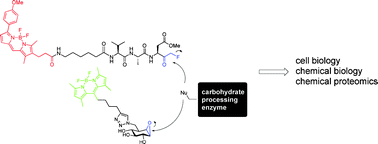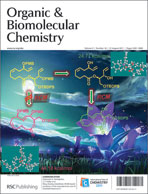Supplying an organism with modified precursor materials for biosynthesis is a great way of hijacking the synthetic machinery of an organism to make the compounds you want. In this paper Cormac Murphy and colleagues from University College Dublin and Ecole Normale Superieure demonstrate that precursor-directed biosynthesis is a convenient way to create analogs of rumbrin with tunable potency and selectivity, also showing that the 3-chloropyrrole moiety is not absolutely essential for biological activity in this class of polyenes. One of the compounds prepared showed dramatically improved activity against lung cancer cells.
Interested? Read this article in OBC, it is free to access for the next four weeks!
Production of anticancer polyenes through precursor-directed biosynthesis
Benjamin R. Clark, Stephen O’Connor, Deirdre Fox, Jacques Leroy and Cormac D. Murphy
Org. Biomol. Chem., 2011, Advance Article
DOI: 10.1039/C1OB05667K













